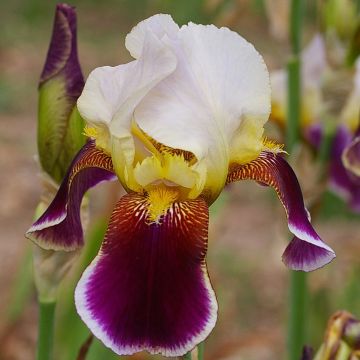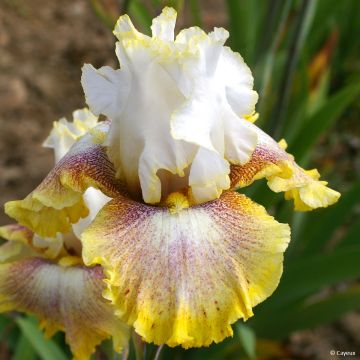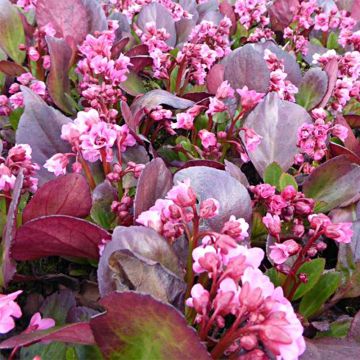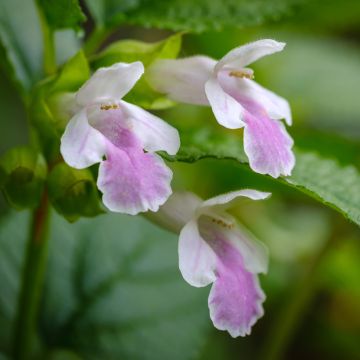

Iris germanica Old Black Magic


Iris germanica Old Black Magic
Iris Old Black Magic - Tall Bearded Iris
Iris germanica Old Black Magic
German Iris, Bearded Iris
This plant carries a 12 months recovery warranty
More information
We guarantee the quality of our plants for a full growing cycle, and will replace at our expense any plant that fails to recover under normal climatic and planting conditions.
From €5.90 for pickup delivery and €6.90 for home delivery
Express home delivery from €8.90.

Does this plant fit my garden?
Set up your Plantfit profile →
Description
Iris 'Old Black Magic' is one of the best varieties of "black" flowers. The plant is not only floriferous and prolific, but it also has some of the darkest flowers that can be found among large garden irises. The flowers are modest in size and quite simple in shape, with slightly wavy charcoal petals that seem almost to be woven from black silk around a mustard beard. Their fragrance is pronounced revealing sweet notes of grape and chocolate. Obtained in 1996 in the USA, this variety has won awards in the United States and from the RHS in England.
The Garden Iris is a rhizomatous and deciduous upright tufted perennial. It belongs to the iridaceae family. 'Old Black Magic' is one of the many cultivars, whose origin is controversial due to the highly variable number of chromosomes in different species and varieties of Iris. It should be noted that Garden Irises have European origins. 'Old Black Magic' is a tall cultivar, 90 cm (35in) high when flowering whose sturdy stem carries 8 to 12 flower buds which open one by one, a guarantee of long flowering. The clump will spread very quickly, with no theoretical limit over time, with the central rhizomes becoming bare in favour of the outer rhizomes. The foliage consists of long glaucous green, highly veined sword-like leaves. Flower stems appear in April and blossom in May, towards the beginning of the season for large irises. The flowers open from the top to the bottom. The extremely dark colour is magnified by the silky texture of the petals and sepals. This black is cold, showing very little red. The beards are mustard yellow, darker at the base.
Obtained by Schreiner (USA), 1996.
Awards: Honorable mention in 1998, Award of Merit in 2000.
To accompany irises, choose plants that thrive in the sun and dry soil, preferably low-growing or with light foliage so as not to shade them, and pay attention to their decorative appearance and flowering date. Gauras, for example, meet these criteria, and their later flowering will keep the bed attractive in summer. Eschscholzias, perennial geraniums, salvias, and Libertias also complement irises very well. Plant tall irises against a wall, in relative shelter from the wind. They can also be planted in the foreground of shorter and earlier varieties. The kitchen garden can be planted with a few clumps or borders of irises for cut flowers.
Path border: the entire range can be used, from the early dwarfs less than 40 cm (16in) tall to tall irises over 75 cm (30in) tall flowering in May, including the intermediates (in size and earliness) and the border irises, medium-sized but flowering with the tall ones. Tall irises may need staking.
Mass border: the domain of border irises and dwarfs.
Mixed border: the entire range of sizes can be used, chosen according to the location (front, back) and the height of the surrounding plants.
Iris bed, the iris garden: the paradise of the iris enthusiast. The use of the entire range of bearded irises allows for two and a half months of flowers in spring. The choice of so-called reblooming irises offers a few additional flowers in late summer or autumn.
Report an error about the product description
Iris Old Black Magic - Tall Bearded Iris in pictures
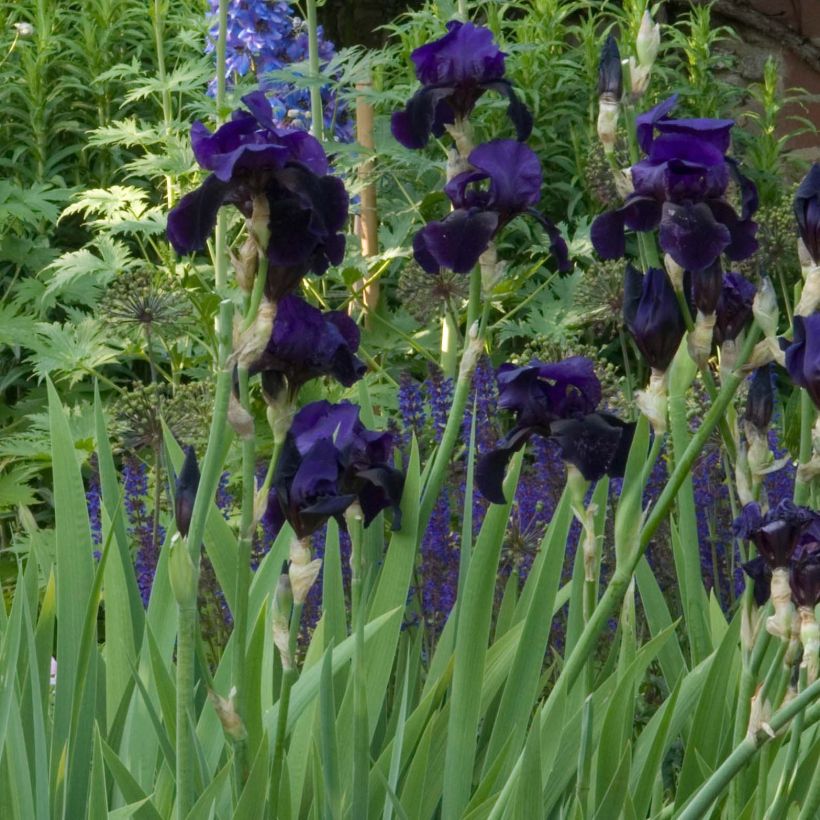




Flowering
Foliage
Plant habit
Botanical data
Iris
germanica
Old Black Magic
Iridaceae
German Iris, Bearded Iris
Cultivar or hybrid
Other German Iris - Bearded Iris
Planting and care
Do you have a very sunny location, dry during summer?
This is the ideal location for irises! In the shade, they grow but do not flower. They are hardy and do not need winter protection. Well-drained soil is perfect, even dry and chalky, or rocky. Soil that is too wet promotes rhizome rot. Plant from July to September to allow the rhizomes to grow and develop new roots before winter. They should be planted as soon as they are purchased for best results. Plan to divide irises every 4 years or so to give them fresh soil. They are vigorous and need space to develop and flower well. Plant with a spacing adapted to the size and vigour of the variety: about 34-50 cm (13-20in) for tall varieties. Always consider the direction of growth of the rhizomes, arranging them in a star shape with buds and leaves facing outward, and spacing them well away from other varieties so that they have room to grow.
Planting
Dig a hole that is wide and deep enough. Create a conical mound of soil on which to place the rhizome and spread out the roots. Cover the roots. The rootstock must be level with the surface of the soil. It should not be planted in a hollow (risk of rot), so take into account that the soil will settle and the iris will sink. In clayey or moist soil, the rhizome can even be raised on a slight mound. To make the soil cling to the roots, gently firm and water abundantly immediately after planting. Water if necessary 2-3 times until it takes root.
Maintenance:
Keep the soil free of weeds by shallow hoeing, taking care not to damage the rhizomes or roots. Weeds shade the irises, retain moisture (causing rot), and attract slugs. Similarly, remove dry leaves. If they are diseased (red-bordered spots), we recommend burning them. Remove faded flowers.
Planting period
Intended location
Care
-
, onOrder confirmed
Reply from on Promesse de fleurs
Spring flowering perennials
Haven't found what you were looking for?
Hardiness is the lowest winter temperature a plant can endure without suffering serious damage or even dying. However, hardiness is affected by location (a sheltered area, such as a patio), protection (winter cover) and soil type (hardiness is improved by well-drained soil).

Photo Sharing Terms & Conditions
In order to encourage gardeners to interact and share their experiences, Promesse de fleurs offers various media enabling content to be uploaded onto its Site - in particular via the ‘Photo sharing’ module.
The User agrees to refrain from:
- Posting any content that is illegal, prejudicial, insulting, racist, inciteful to hatred, revisionist, contrary to public decency, that infringes on privacy or on the privacy rights of third parties, in particular the publicity rights of persons and goods, intellectual property rights, or the right to privacy.
- Submitting content on behalf of a third party;
- Impersonate the identity of a third party and/or publish any personal information about a third party;
In general, the User undertakes to refrain from any unethical behaviour.
All Content (in particular text, comments, files, images, photos, videos, creative works, etc.), which may be subject to property or intellectual property rights, image or other private rights, shall remain the property of the User, subject to the limited rights granted by the terms of the licence granted by Promesse de fleurs as stated below. Users are at liberty to publish or not to publish such Content on the Site, notably via the ‘Photo Sharing’ facility, and accept that this Content shall be made public and freely accessible, notably on the Internet.
Users further acknowledge, undertake to have ,and guarantee that they hold all necessary rights and permissions to publish such material on the Site, in particular with regard to the legislation in force pertaining to any privacy, property, intellectual property, image, or contractual rights, or rights of any other nature. By publishing such Content on the Site, Users acknowledge accepting full liability as publishers of the Content within the meaning of the law, and grant Promesse de fleurs, free of charge, an inclusive, worldwide licence for the said Content for the entire duration of its publication, including all reproduction, representation, up/downloading, displaying, performing, transmission, and storage rights.
Users also grant permission for their name to be linked to the Content and accept that this link may not always be made available.
By engaging in posting material, Users consent to their Content becoming automatically accessible on the Internet, in particular on other sites and/or blogs and/or web pages of the Promesse de fleurs site, including in particular social pages and the Promesse de fleurs catalogue.
Users may secure the removal of entrusted content free of charge by issuing a simple request via our contact form.
The flowering period indicated on our website applies to countries and regions located in USDA zone 8 (France, the United Kingdom, Ireland, the Netherlands, etc.)
It will vary according to where you live:
- In zones 9 to 10 (Italy, Spain, Greece, etc.), flowering will occur about 2 to 4 weeks earlier.
- In zones 6 to 7 (Germany, Poland, Slovenia, and lower mountainous regions), flowering will be delayed by 2 to 3 weeks.
- In zone 5 (Central Europe, Scandinavia), blooming will be delayed by 3 to 5 weeks.
In temperate climates, pruning of spring-flowering shrubs (forsythia, spireas, etc.) should be done just after flowering.
Pruning of summer-flowering shrubs (Indian Lilac, Perovskia, etc.) can be done in winter or spring.
In cold regions as well as with frost-sensitive plants, avoid pruning too early when severe frosts may still occur.
The planting period indicated on our website applies to countries and regions located in USDA zone 8 (France, United Kingdom, Ireland, Netherlands).
It will vary according to where you live:
- In Mediterranean zones (Marseille, Madrid, Milan, etc.), autumn and winter are the best planting periods.
- In continental zones (Strasbourg, Munich, Vienna, etc.), delay planting by 2 to 3 weeks in spring and bring it forward by 2 to 4 weeks in autumn.
- In mountainous regions (the Alps, Pyrenees, Carpathians, etc.), it is best to plant in late spring (May-June) or late summer (August-September).
The harvesting period indicated on our website applies to countries and regions in USDA zone 8 (France, England, Ireland, the Netherlands).
In colder areas (Scandinavia, Poland, Austria...) fruit and vegetable harvests are likely to be delayed by 3-4 weeks.
In warmer areas (Italy, Spain, Greece, etc.), harvesting will probably take place earlier, depending on weather conditions.
The sowing periods indicated on our website apply to countries and regions within USDA Zone 8 (France, UK, Ireland, Netherlands).
In colder areas (Scandinavia, Poland, Austria...), delay any outdoor sowing by 3-4 weeks, or sow under glass.
In warmer climes (Italy, Spain, Greece, etc.), bring outdoor sowing forward by a few weeks.

































